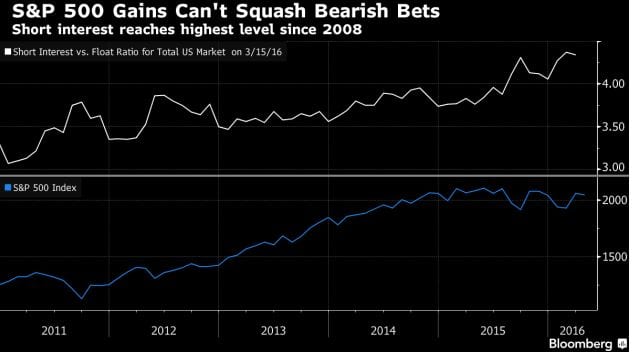
A young man is a theory; an old man is a fact.
Edgar Watson Howe
Is it Time to Buy the Short Dow ETF?
Updated Dec 2022
The first response that comes to one’s mind is yes, as this economic recovery has been dismal at best and illusory at worst. The unemployment rate might have dropped, but how the BLS (Bureau of Labour Statistics) calculates this figure is questionable at best. They conveniently exclude individuals who have stopped looking for a job in their calculation. Many of these people stopped looking for jobs out of pure frustration; after trying countless times without success, they simply gave up and assumed they would never land a job.
Most of the new jobs created are low-paying, and in most cases, they are only part-time. Many individuals are working two and sometimes three jobs just to make ends meet; this is not a sign of an improving economy.
Part-Time Workers: Navigating the Impact of the Great Recession
Over 6.5 million Americans work part-time jobs, but all seek full-time employment; before the so-called great recession, only 4.5 million Americans worked part-time. More importantly, we did not waste trillions of dollars trying to create an illusion that all was well. This money could have been used better, but it was not, and the same will hold true in the future.
Instead of dealing with the underlying issues, more money will be flushed down the drain to prop up this market to maintain the illusion that all is well. Almost 50% of Americans have no savings at all. The breakdown is as follows; 28% have no protection in their accounts, and another 21% don’t even have savings accounts.
Another survey indicates that 62% of Americans don’t even have $1000 in savings; this is certainly not indicative of an improving economy. Were it not for the stock market that is trading close to its highs, one would be hard-pressed to provide cold-hard statistics supporting the assertion that the economy has improved over the past eight years.
The Hated Stock Bull Market: Unraveling its Impact on the Corporate World
The Corporate World also provides several signals that all is not well on the economic frontier. More companies are cutting back on their dividends, confirming that this economy is far from healthy or strong. Dividend players usually focus on the payout ratio, as this tells you how much of its earnings a company pays out in dividends. Many companies have payout ratios of over 40%, which is well above the historical norm of 38%, suggesting that the outlook could worsen with time.
The explosive growth in the number of companies using stock buybacks to boost their EPS clearly signals that the economy is far from healthy. None of these companies are going to admit to this in the open. One only needs to examine the massive amounts of money companies ploughed into share buybacks over the past eight years to realize something is amiss. Many companies would not have made their earnings nor posted gains in EPS had they not repurchased their shares.
Every year during this so-called fake economic recovery, the dollar amount dedicated to share buybacks has risen and will continue to rise in the foreseeable future; it is the easiest way to boost earnings. Corporations have spent $1 trillion on dividends and share buyback programs for the past two years. At the current rate, 2016 will be on pace to set yet another record.
Explosive Growth of Share Buybacks: Unveiling the Trend
All these factors would lead you to believe the market should have crashed long ago. What gives; why are the markets trending higher? The forces behind the market are divorced from reality. Hot money is powering this market and will continue to power it, which is why this is probably the most hated bull market in the history of all bull markets. The world is embracing negative rates, so even more hot money will flow into this market. It will lower the cost of borrowing, and the corporate world will go on a feeding frenzy once negative rates hit the US.
Why would corporations do this? The answer is relatively simple; if they borrowed so much money and continued to borrow it when rates were low; what do you think they will do when rates turn negative? They will have a field day. There is no faster way to boost EPS than by cutting the supply of the float; in other words, buying back their shares. Corporate officers’ compensation is based on performance. Given this simple, legal and highly immoral solution, they will unlikely pass up the opportunity to walk away with even bigger paychecks. This is why CEO pay continues to rise while the average worker drops.
Exploring Mass Psychology: Unraveling the Hated Stock Bull Market
Even though logic dictates that this market is ready to crash and burn, it probably will not. We will witness extreme moves in volatility, and many will mistake firm corrections for crashes; Aug of 2015 and Jan 2016 are two such examples that had the bears and naysayers out in full force, yelling that the world was about to end. However, on each occasion, we came out. Much to the shock of many, we stated that no crash was forthcoming and that these corrections provided the astute investor with a great buying opportunity. The masses have not embraced this bull market, and that is why it is the most hated bull market in history. Until they do, we expect the markets to trend higher. However, this market will experience more robust and stronger corrections the higher it trends, but it will not crash until the masses are finally forced to embrace this bull market.
Surging Short Interest Ratio: Reaching Highest Level Since 2008
When individuals are bearish, they short stocks; however, this is a contrarian indicator. A high short-interest ratio is usually bullish, and the current short-interest ratio is very high.

The bears are shorting the market to the tune of $1 trillion; this is a tremendous long-term contrarian bullish signal. We have stated over and over again that the stronger the correction, the better the buying opportunity for a long time, most recently in Aug of 2015 and Jan of 2016. History is clearly indicative of this; from the tulip bubble to the financial crisis of 2008, the masses were always on the wrong side of the markets.
Unveiling the Short Dow ETF Outlook: Aug 2019 Analysis
Never wear your emotions on your sleeves; observe and use the data to formulate a plan. If one is part of the emotional chaos, one cannot see or hear anything other than the picture they are being directed to examine. Only a calm mind can see what is going on. You have a millisecond to question the emotion that is about to take over; will you examine it and open a new door, or will you allow it to take over and lead you astray? Insanity is doing the same thing repeatedly and hoping for a new outcome. New outcomes come from new actions, not hope; change the angle of perception and change the outcome. Fiat Currency: Instruments of Mass Destruction
This bull market is unlike any other; before 2009, one could have relied on extensive technical studies to more or less call the top of a market give or take a few months; after 2009, the game plan changed and 99% of these traders/experts failed to factor this into the equation. Technical analysis as a standalone tool would not work as well as did before 2009 and in many cases would lead to a faulty conclusion. Long story short, there are still too many people pessimistic (experts, your average Joes and everything in between) and until they start to embrace this market, most pullbacks ranging from mild to wild will falsely be mistaken for the big one. Market Update Feb 28, 2019
Market Turmoil is an Opportunity in Disguise
Instead of buying the Short Dow Etf and trying to short the markets, use the pullback to open positions in top-notch companies that you know will do well in 2-3 years down the road. Stock markets always trend upwards, so there has never been a rich perma bear.
One should remember the paragraph above every time the urge to panic rises; no bull market has ever ended on a note of fear or anxiety. Despite the media trying to create a new narrative to prove otherwise for the past several years, they have failed miserably. And this illustrates that news, in general, should either be treated as rubbish or viewed through a humorous lens.
In terms of the stock market, until the Fed changes its mind, all sharp corrections have to be viewed as buying opportunities, and backbreaking corrections have to be placed in the category of “once in a lifetime events”, provided of course the trend is positive. That is what we are here for; to inform you if the trend is positive (Up) or negative (down).
The Fed Has indicated that it will do whatever is needed to keep this market afloat and maintain the illusion that all is well. They still have plenty of room to manoeuvre as we have not yet started to embrace negative rates. While logic dictates this bull should crash and burn, the forces that are driving this market do not operate on those realms. Investing For Dummies: Forever QE & Stock Market Bull 2019
Unlocking the Potential: A Better Plan for the Short Dow ETF
The markets are rather overbought and begging for a reason to let out some steam. Overbought is simply a term that indicates that a technical indicator/oscillator has reached its upper limit. In this instance, several indicators are trading in the overbought ranges. It’s the month of May, so the adage of selling in May and going away could come into play. Given the strong run-up the markets have experienced, it is just a question of time before they start to pull back. The markets are highly volatile, so it would not surprise us if the Dow experiences a substantial correction. However, do not confuse a correction for a crash.
The wise man regulates his conduct by the theories both of religion and science. But he regards these theories not as statements of ultimate fact but as art-forms. John B. S. Haldane
Other Articles of Interest
Fear mongers are parasites that profit from your fear (2 May)
Gold Bugs think & stop listening to Fear mongers (1 May)
Fear mongers are parasites that profit from your fear (27 April)
Plain evidence that financial experts know even less than Jackasses (26 April)
Negative rates fantastic for speculators but terrible for the global economy (16 April)
How will Gold fare in a negative interest environment (14 April)


